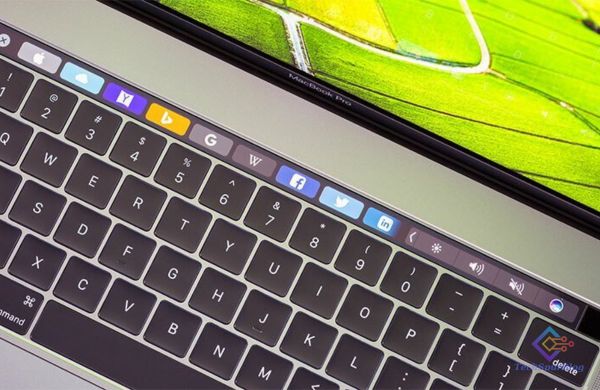
In a swift and unanticipated move, Apple has bid adieu to the controversial Touch Bar, as the tech giant unveiled its latest lineup of M-series chips, MacBook Pro, and iMac in a historically brief event. The Touch Bar, introduced in October 2016, failed to gain the user acceptance Apple had hoped for, and after several battles, it has finally reached its end with the discontinuation of the MacBook Pro M2 from Apple’s product catalog.
Goodbye to the Touch Bar
During the first few months of 2023, the filing of a patent suggested that the MacBook Pro might feature a 3D pressure-sensitive touchscreen that could have potentially evolved into a revamped Touch Bar, enabling users to perform various functions more efficiently and comfortably. However, the document only serves as a reminder that not all innovative ideas materialize, a common occurrence in the world of technology.
Also Read: How to Fix MacBook Pro Touch Bar Not Working
Some concept creators took the initiative to propose improvements to the Touch Bar, including customization options, but we may never know if these changes would have succeeded, at least not in the near future.
In 2016, Apple introduced the first MacBook Pro with the Touch Bar, a small touchscreen toolbar located at the top of the keyboard. Its purpose was to provide macOS users with the ability to add emojis, access shortcuts, control sound volume, send, reply to, or delete emails, and perform a multitude of tasks more efficiently and conveniently. However, the Touch Bar failed to gain widespread popularity among users.
In 2023, for various reasons, Apple has bid farewell to classic features in its devices, including the launch of the iPhone 15 with a USB-C port, replacing the Lightning connector.
Also Read: Scary Fast: New M3 Chips, USB-C Accessories, and iPad Mini Rumors
This move marks a significant shift in Apple’s design philosophy, as it continues to innovate and adapt to changing user preferences. The elimination of the Touch Bar reflects Apple’s commitment to providing users with products and features that resonate more effectively with their needs and preferences, setting the stage for what the future holds for Apple’s ever-evolving product lineup.

Leave a Reply